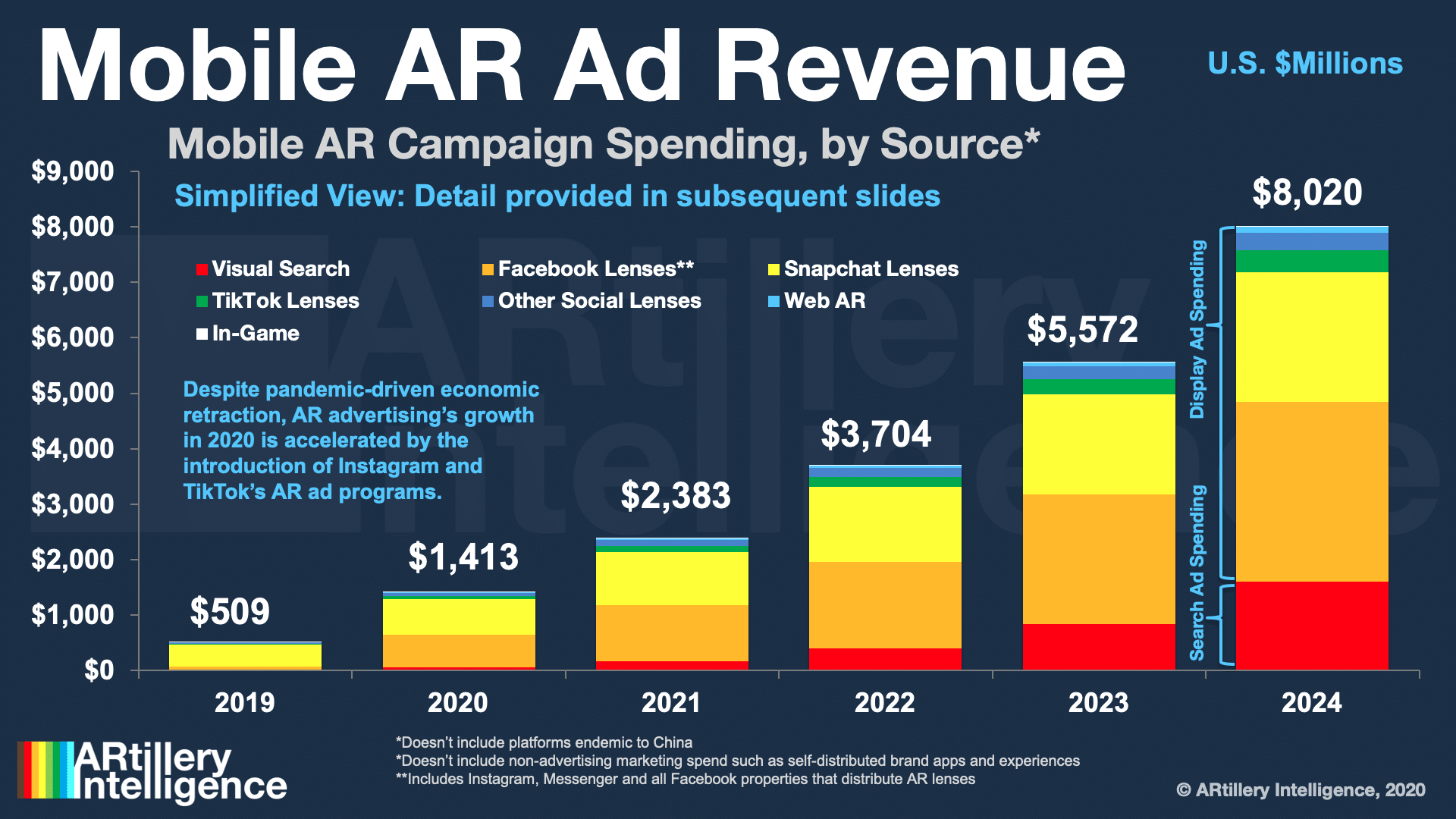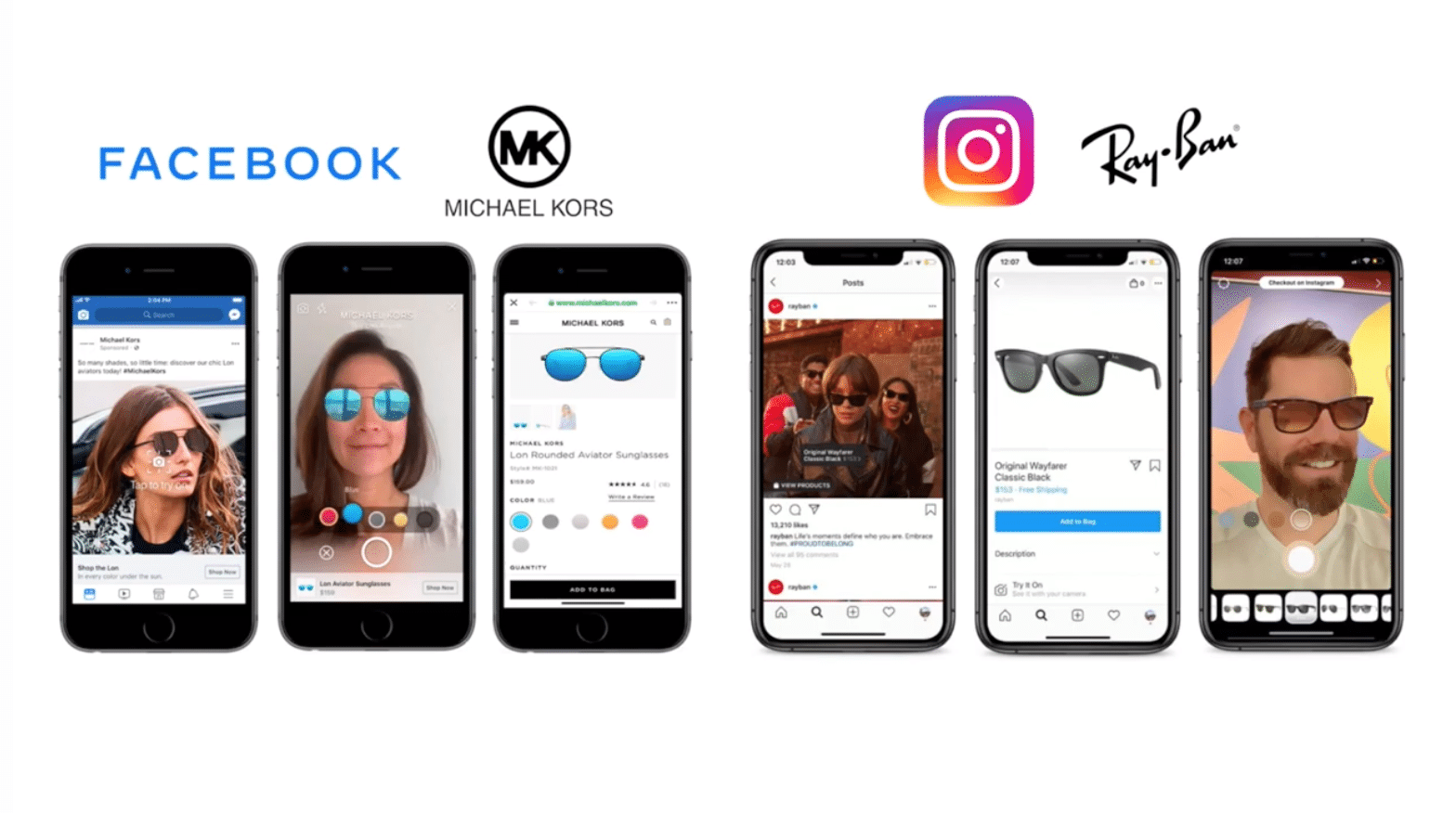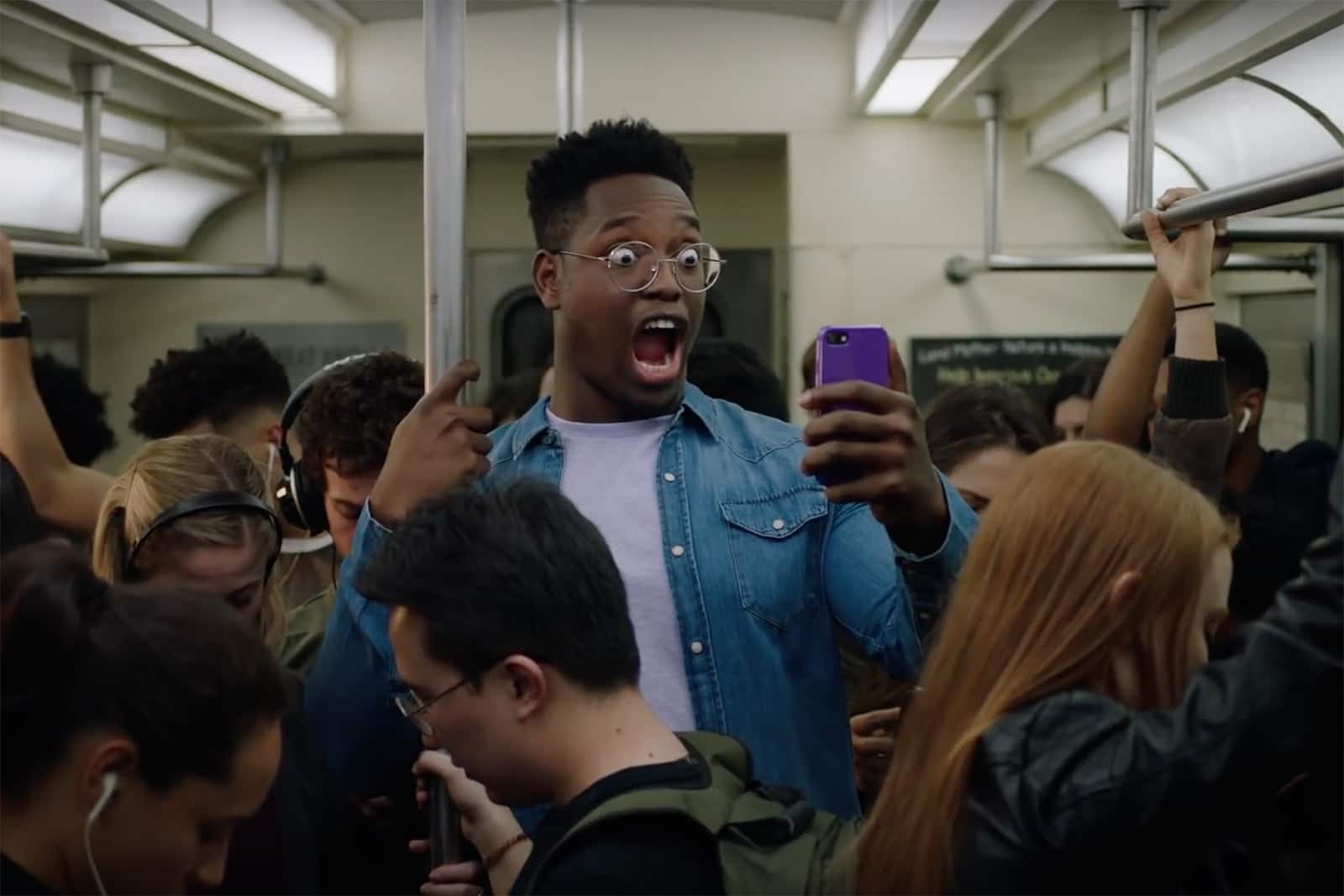
![]() This post is adapted from ARtillery Intelligence’s report, AR Advertising Deep Dive, Part I: The Landscape. It includes some of its data and takeaways. More can be previewed here and subscribe for the full report.
This post is adapted from ARtillery Intelligence’s report, AR Advertising Deep Dive, Part I: The Landscape. It includes some of its data and takeaways. More can be previewed here and subscribe for the full report.
AR continues to evolve and take shape as an industry. Like other tech sectors, it has spawned several sub-sectors that comprise an ecosystem. These segments represent standalone topics in ARtillery Intelligence’s ongoing analysis and reports like this one.
Prominent sectors include industrial AR, social, gaming, and AR shopping. But existing alongside all of them – and overlapping in a classic Venn diagram – is AR advertising. This includes immersive animations that let consumers visualize products in their space.
AR advertising is actually one of the most lucrative subsectors, on pace to reach $1.41 billion this year and $8.02 billion by 2024. These figures measure the money spent on sponsored AR experiences with paid distribution on networks like Facebook and Snapchat.
As we’ve examined in past reports, the factors propelling this revenue growth include brand advertisers’ growing affinity for AR. Its ability to demonstrate products in immersive ways resonates with their creative sensibilities, transcending what’s possible in 2D formats.
Beyond that high-level appeal, there’s a real business case. AR ad campaigns continue to show strong performance metrics. This was the case in “normal” times and has accelerated during the Covid era when retail lockdowns compel AR’s ability to visualize products remotely.

Level Setting
To define what we mean by AR advertising, these are paid media placements that allow consumers to activate their smartphone camera and superimpose branded animations on the real world. This is usually to promote or visualize a given advertiser’s products.
To further clarify, the figures above include paid placements to promote and distribute AR experiences, such as sponsored AR lenses in Facebook and Snapchat. It doesn’t include AR features within a company or brand’s own apps, such as IKEA Place’s furniture visualization.
The latter falls under the category of AR commerce, a topic we also spend lots of time with. AR advertising of course leads to commerce, but it’s a different area of spending (marketing versus advertising) in terms of how companies budget and execute promotional strategies.
Put another way, AR advertising and commerce flow into each other, just as advertising’s goal is to drive commerce in ways we’ll examine in this report. But commerce can also happen outside of paid ad campaigns, such as a company’s own app, web properties, and self-distributed AR.

Creative Sensibilities
AR advertising’s revenue growth is being driven by a few key factor, as noted. One is that brands are attracted to its ability to demonstrate products in immersive ways. That appeals to their creative sensibilities – erstwhile stuck in 2D media and confining formats like mobile banner ads.
Adoption is also driven by the fact that it’s working. There’s a feedback loop of campaign performance, results and ROI. This causes AR ad creation to grow through recurring campaigns, as well as new entrants that hear about its effectiveness through case studies.
“We’ve shown in our first test of AR ads that the AR version of the ad, when A/B tested against a non-AR ad, drives statistically-significant more conversion,” Facebook’s Elise Xu said on stage at AWE Europe. “The next step is making the creation of these assets far easier and cheaper.”

Inherent Visualization
Another influential factor that’s driving AR advertising’s appeal is its ability to span the consumer purchase funnel. It’s conducive to upper-funnel reach and lower-funnel response. This is a relatively rare attribute in ad media, as a sliding scale exists between endpoints of the funnel.
For example, upper-funnel advertising includes things like TV, newspaper and billboard advertising: It’s all about reach and brand awareness. Lower funnel advertising includes things like search: It’s all about high-intent action, but it’s not optimal for brand awareness.
AR is proving that it can span this funnel by achieving high-reach distribution in places like Facebook’s News Feed and Snapchat’s Lens Explorer. It can also achieve high-performance when users activate immersive product try-ons, then convert to purchasing items on the spot.
That last step in the funnel — the actual transaction — is the most impactful. AR’s inherent visualization can boost conversion rates, but it’s also accelerated by transactional functionality that’s increasingly incorporated into lens-forward social channels like Snap and Instagram.
We’ll pause there and circle back in the next installment to continue the discussion of how the AR advertising landscape is materializing. Meanwhile, check out the full report here.
